Nutrition & Science
The beverage industry puts the best interests of its consumers first.
Beverages are an important part of a healthy, balanced diet. They quench thirst while providing essential vitamins and minerals to keep your body energized. Many of the beverage industry’s products, including bottled water, juices, sports drinks, teas, milk and diet soft drinks, can be a catalyst for health and fitness.
The beverage industry puts the best interests of its consumers first. This has led to several industry innovations to improve the health of consumers.
Clear on Calories
Calorie Information at Your Fingertips
America’s beverage companies are putting new labels on the front of every can, bottle and pack we produce – making it easier to choose the drink that’s right for you. This is all part of our Clear on Calories initiative, announced in 2010 in support of First Lady Michelle Obama’s “Let’s Move!” anti-obesity campaign.
Consumers across America have seen these labels on the front of their favorite beverages. This is yet another way that the beverage industry is helping consumers make informed choices as part of an active, healthy lifestyle.
Praise for Clear on Calories:
“In fact, just today, the nation’s largest beverage companies announced that they’ll be taking steps to provide clearly visible information about calories on the front of their products – as well as on vending machines and soda fountains. This is exactly the kind of vital information parents need to make good choices for their kids.”
-First Lady Michelle Obama
As noted in her speech announcing the launch of “Let’s Move!” (Feb. 9, 2010)
Background
The Clear on Calories initiative is one part in a series of concrete, meaningful actions taken by the non-alcoholic beverage industry to be part of the solution in helping reduce childhood obesity, others of which include:
Product innovation. The industry continues to meet the evolving tastes of the American consumer. Since 1998, beverage calories in the marketplace have declined by 21 percent driven largely by consumer interest in the growing range of zero-calorie, low-calorie, reduced-calorie and portion-controlled beverage choices offered by the beverage industry.
Cutting calories in schools. The beverage industry delivered on its commitment to change the beverage landscape in America’s schools by removing full-calorie soft drinks and providing more lower-calorie, nutritious, and smaller-portion beverage options in all K-12 schools. Through these efforts, ABA members have reduced beverage calories shipped to schools by 90 percent since 2004
Marketing responsibly. ABA members have committed to global marketing standards that prevent marketing of beverages other than 100% fruit juice, water, and milk-based drinks in programming targeted to children under the age of 12. In addition, many beverage companies participate in the Children’s Food and Beverage Advertising Initiative, which further limits marketing to children.
Source: American Beverage Association
School Beverage Guidelines
Removing Calories from Schools
We promised America’s parents that we would change the beverage mix in schools, and our companies – along with their school partners – have delivered dramatic and significant results. With the National School Beverage Guidelines, we’ve removed full-calorie sodas from schools and replaced them with a range of lower-calorie, nutritious, smaller-portion choices. This has been no easy feat, but it is one we are proud of and we know will have meaningful and lasting results.
Our Results
The beverage industry recently published the Alliance School Beverage Guidelines Final Progress Report, the final annual report on the implementation of the guidelines. The data measurement and statistics in the report were prepared by Keybridge Research LLC, a Washington, D.C.-based economic analysis and public policy research firm, under the direction of Dr. Robert Wescott. The three markers of progress:
We have dramatically cut calories available from beverages in schools. There has been a 90% decrease in beverage calories shipped to schools.
Full-calorie soft drinks have been removed from schools. Beverages shipped to schools do not exceed 66 calories per 8 ounces, except for portion-controlled 100% fruit juices.
8 ounces in elementary schools
10 ounces in middle schools
12 ounces in high schools
We have successfully changed the beverage landscape in schools across the country. The School Beverage Guidelines provide for a range of lower-calorie, nutritious, smaller-portion beverage options. As a result, 100 percent juice, low-fat milk and bottled water are allowed in elementary and middle schools. In addition to these low- and no-calorie beverages, calorie-capped sports drinks, flavored waters, and teas are allowed in high schools.
The School Beverage Guidelines are a national standard that is in place and working. The beverage industry has worked with its school partners to accomplish a change in school nutrition.
The School Beverage Guidelines are common sense, supported by science and responsive to concerns about nutrition in schools.
Source: American Beverage Association
Caffeine
Caffeine is a natural substance and mild stimulant found in coffee beans, tea leaves, kola nuts, cocoa beans and other plants. Caffeine also can be created to be identical to the natural substance. Both natural and manufactured forms of caffeine are safe ingredients that consumers have enjoyed in many beverages around the world. In North America, most adults aged 25 and over consume most of their caffeine from coffee, but other sources include tea, soft drinks and energy drinks.
History
Caffeine is an alkaloid compound that has been safely used as a flavor enhancer in many beverages for more than one hundred years. The U.S. Food and Drug Administration (FDA) designated caffeine in cola drinks as “Generally Recognized As Safe” (GRAS) in 1959. The FDA considers caffeine safe for all consumers, including children. In 1987, following extensive review, the FDA “found no evidence to show that the use of caffeine in carbonated beverages would render these products injurious to health.”
Ingredients
Found naturally in more than 60 species of plants, caffeine is one of the most studied ingredients. In amounts often found in coffee and some energy drinks, caffeine can have a pleasant stimulating or alerting effect. More than 140 countries have specifically considered the safety of caffeine and allow its use in beverages at varying levels.
Caffeine Content of Specific Beverages
In accordance with FDA regulations, beverage companies list caffeine in the ingredients list on product labels when it is added to a product. There is no requirement to list the precise amount of caffeine present. However, many American Beverage Association member companies voluntarily list precise caffeine contents on product labels as part of an initiative to provide consumers with more information about the beverages that they are drinking. Our members have also provided caffeine content information through their corporate toll-free numbers and websites for many years. American Beverage Association member companies also provide caffeine-free beverages for consumers who prefer not to consume caffeine.
Unlike energy drinks, caffeine levels for coffee vary depending on several factors, including coffee bean type, geography and harvest, as well as consumer brewing method/time and cup size.
Energy drinks, a growing beverage category, also often contain caffeine typically in the amount of 60 milligrams per 8 fluid ounces.
A 16-ounce energy drink typically contains about 160 milligrams of caffeine while coffeehouse coffee of the same size contains about 330 milligrams.
Caffeine in Beverages
The caffeine in beverages is either added during the formulation process, or occurs naturally as one of the ingredients, such as in ready-to-drink teas. For more than 100 years, the formulas for these drinks have carefully balanced various ingredients to achieve the flavor combination that consumers prefer. The bitter taste of caffeine adds to the complex overall flavor profile of soft drinks. Beverage companies offer both caffeinated and caffeine-free versions of many soft drinks.
Source: American Beverage Association
Cutting Sugar in the American Diet
Working with the Alliance for a Healthier Generation, we set a bold new goal to reduce beverage calories consumed per person nationally by an additional 20% by 2025. This Balance Calories Initiative is our voluntary, long-term commitment to creating a healthier nation by changing how Americans buy and consume our products.
National Campaign, Local Focus
The Balance Calories Initiative is a national initiative that’s increasing access to beverages with less sugar, and smaller proportions—in stores and restaurants down the street and across the country. And we are focused locally in communities where obesity rates are above the national average, and there is less availability and demand for beverages with less sugar or no sugar at all, and smaller portions. We’re using a test-and-learn approach to find ways to encourage these communities to try these new options to reduce the sugar they consume from beverages.
Getting the Word Out
We know that balance is important. So we’re putting our collective marketing expertise behind these efforts to make finding that balance a little easier. Together, Coca-Cola, Dr Pepper and Pepsi are reminding consumers to think “balance” when choosing a beverage. That’s why you’ll see reminders like “Balance what you eat, drink and do” and “Calories count. Check then choose.” on coolers and vending machines across the country. These messages remind you to make the beverage choice that fits your day.
How We’re Supporting Your Efforts to Balance
Signs on coolers and displays remind everyone to think “balance” before making their beverage choices.
More choices, including smaller portions and a wider range of beverages with less sugar or no sugar at all.
Clear calorie information on the front of every product.
Oral Health
Beverages & Oral Health
A person’s overall health and wellness is determined by many factors, including genetics, dietary habits and exercise. Likewise, a person’s dental health also is impacted by many factors, such as genetics, dietary habits and oral hygiene habits. While some critics say beverages are a unique factor in causing tooth decay, the facts state otherwise.
Causes of Dental Cavities and Tooth Erosion
Oral health is determined by many different aspects. Several factors contribute to the formation of dental cavities, including the types of food consumed, the length of time foods are retained in the mouth and a person’s level of oral hygiene and access to professional dental care. Science tells us that individual susceptibility to both dental cavities and tooth erosion varies depending on a person’s behavior, lifestyle, diet and genetic make-up. In fact, there are multiple causes of dental cavities and erosion and many protective factors that can help prevent or minimize them.
Dental Health Continues to Improve
The good news is the number of cavities among children has declined significantly in America for the past several decades due to a number of factors, including fluoridated water and toothpaste, greater access to professional dental care, the use of dental sealants and better oral hygiene, to name a few. We should all do our part to enhance oral health by brushing and flossing our teeth and making regular visits to the dentist.




